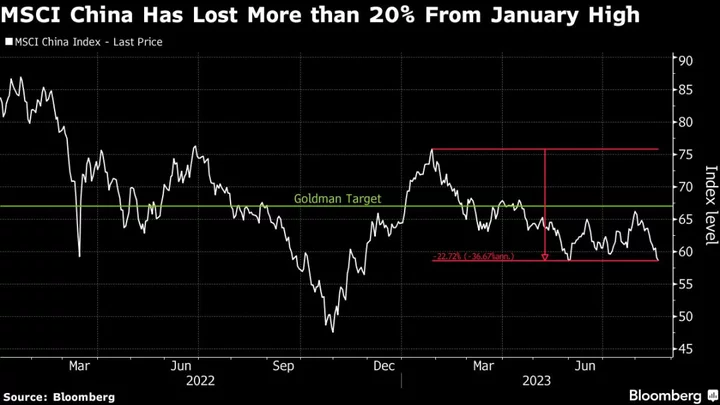Chile’s economy picked up at the start of the year, growing at the fastest pace since the end of 2021 amid an expansion in service industries, the central bank said.
Gross domestic product grew 0.8% in the first quarter from the prior three months and fell 0.6% from a year before. Economists surveyed by Bloomberg expected 1% expansion quarter-on-quarter and a 0.9% contraction year-on-year. Fourth-quarter growth was revised to 0.2% quarter-on-quarter from 0.1%.
Chile’s central bank and Finance Ministry have boosted their 2023 growth forecasts in the past month as activity responds more slowly than expected to tight monetary policy. Government officials have said the economy is set to gather steam from here on.
“This was a good start to the year confirming that economic activity has been more resilient than initially expected,” Andres Abadia, chief Latin American economist at Pantheon Macroeconomics, said in a note. “Growth momentum likely will gather speed thanks to falling inflation, lower interest rates, and improving conditions for key exports.”
Read more: Chile Holds Key Rate With Inflation Trudging Toward Target
The economy is still coming off the effects of unprecedented stimulus at the start of the pandemic, when government transfers reached 90% of households and individuals withdrew more than $50 billion from their pensions savings. Those measures propelled GDP growth to a record and inflation to the highest since the 1990s.
From the last quarter of 2022, activity picked up thanks to other services, mostly hospitality services and restaurants as well as transport, the central bank said in its report today.
The bank also reported a surprise current account surplus of $752 million, while economists expected a deficit of $300 million. It’s only the third quarterly surplus in the last decade. The peso gained 0.3% Thursday, outperforming most over emerging markets.
Last week, policymakers held borrowing costs at 11.25% for the fourth straight meeting. In an accompanying statement, they wrote that consumption indicators continue to trend downward, while investment has been weak.
Going forward, Chile is betting on a national lithium policy to boost production of the metal that’s used in batteries. Meanwhile, the copper sector is facing challenges including aging mines and declining output.
Across Latin America, there are signs that activity remains relatively firm despite fast inflation and high interest rates. Mexico’s GDP expanded 1.1% in the first quarter on strong exports, while Brazil’s economic activity leaped 3.32% in February, according to central bank data.
--With assistance from Rafael Gayol and Giovanna Serafim.
(Adds details from third paragraph.)









